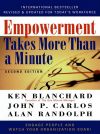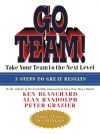Правообладателям!
Представленный фрагмент книги размещен по согласованию с распространителем легального контента ООО "ЛитРес" (не более 20% исходного текста). Если вы считаете, что размещение материала нарушает ваши или чьи-либо права, то сообщите нам об этом.Читателям!
Оплатили, но не знаете что делать дальше?
Текст бизнес-книги "Boundaries: Step One: Me, Myself and I"
Автор книги: Jennie Miller
Раздел: Жанр неизвестен
Текущая страница: 1 (всего у книги 1 страниц)
Boundaries
Step One: Me, Myself and I
Jennie Miller and Victoria Lambert


An imprint of HarperCollinsPublishers Ltd.
1 London Bridge Street
London SE1 9GF
First published in Great Britain by HQ in 2018
Copyright © Jennie Miller and Victoria Lambert 2018
Jennie Miller and Victoria Lambert asserts the moral right to be identified as the author of this work.
A catalogue record for this book is available from the British Library.
This novel is entirely a work of fiction. The names, characters and incidents portrayed in it are the work of the author’s imagination. Any resemblance to actual persons, living or dead, events or localities is entirely coincidental.
All rights reserved under International and Pan-American Copyright Conventions. By payment of the required fees, you have been granted the non-exclusive, non-transferable right to access and read the text of this e-book on-screen. No part of this text may be reproduced, transmitted, downloaded, decompiled, reverse engineered, or stored in or introduced into any information storage and retrieval system, in any form or by any means, whether electronic or mechanical, now known or hereinafter invented, without the express written permission of HarperCollins.
Ebook Edition © January 2019 ISBN: 9780008324681
Version: 2018-10-18
CONTENTS
Cover
Title Page
Copyright
An Introduction to Boundaries
STEP ONE: ME, MYSELF, I
How to develop personal boundaries to improve your self-confidence and help you make better decisions in the most intimate aspects of your life.
Sleep
Fitness
Eating Habits
Unhealthy Habits
Social Media and E-mail Protocol
Your Self-Boundaries and Others
The Drama Triangle
APPENDIX 1
Transactional Analysis: An Overview
APPENDIX 2:
Strokes
Acknowledgements
About the Publisher
An Introduction to Boundaries
Do you often feel you can’t say no? Do you feel spread too thinly between work, emotional relationships and family, and your responsibilities and chores? Perhaps you feel overloaded with to-do lists, promises to friends, financial obligations, or that intangible pressure to succeed in everything you do all at the same time. You may feel frustrated that there is never any time to do those things that really matter to you – whether it is to write a book, spend unpressured time with your loved ones, or just be alone guilt-free. With demands coming from all sides, it is surprisingly easy these days to get buffeted along without ever really feeling in control.
Yet, there is an alternative to living in this twenty-first-century chaos – a way of reframing your own attitude and behaviour so that you can take charge of your life and not allow others undue influence or control. A process which will enable you to improve your quality of life (at work, home and play); to build self-respect; and to lead to a healthier way of being on all levels.
The solution to all this is: boundaries. A complete concept that will allow you to reach past any obstacle and make real change happen in every area of your life.
What are boundaries? In short, these are the decisions we make which govern our own behaviour and the way we interact with others. A sort of personal code which may change with time and circumstance. We’ll explain the concept of boundaries in more depth in the next section but for now hold in mind that a boundary is where you choose to draw a line in the sand in any scenario.
Why do they matter? Because we can’t just follow patterns of behaviour that worked for previous generations as life on this planet has changed beyond recognition in the past thirty years. We are now a 24/7 culture, invisibly connected from our homes to the entire world.
We live in the fast lane, yet few of us have developed strategies to cope with the new problems that have arisen as a result. These issues include burgeoning social media, high-speed and high-turnover lovers, growing workloads in the face of new technology, constantly conflicting opinions on diet and health, and a culture of perfectionism in parenting and relationships. There are familiar problems too which many of us still struggle with: the impact of divorce, personality clashes, the stresses of being caught in the generation gap and career dilemmas.
But there is no doubt that the arrival of the Internet, consumer society, medical advances that are giving us decades of extra life and career expectations have changed life as older generations knew it beyond belief. The way we humans interact with each other has also undergone fundamental shifts, and we believe the way to regain our own equilibrium is to re-examine our lives and behaviour and use fresh boundaries in response to these new dilemmas.
With that in mind, we have devised a Four-Step Programme to teach the use of boundaries in everyday life, beginning with ourselves, and then exploring how the system works in situations related to every aspect of our lives: ourselves, our work life, our relationships and our family. We advise you to follow the Programme in the order set out in the book, although some may find particular sections are more resonant or urgent in their circumstances. Everyone, though, will benefit by starting with a closer look at themselves – and what we call our ‘self-boundaries’.
What do we mean by that? Self-boundaries are the demarcations which define our behaviour, thoughts and feelings. They are that inner voice which says to us: ‘Go this far but no further.’ When used correctly, they help us modify our behaviour or relationships so that we feel or consider ourselves safe. And we need to get into the habit of caring for our ‘selves’ before we can build the healthy relationships with others that will see us thrive.
Each section of the book will contain exercises and sections called Bring in the Boundaries which contain practical tips on identifying and using boundaries, and offer anonymised case histories from Jennie’s clinical practice to exemplify what you need to know. These examples help us to understand how boundaries work in specific circumstances, from dating to divorce, interacting with elderly parents to raising teenagers and managing a team to working for a fractious boss. (The situations chosen have been picked deliberately because in Jennie’s experience they’re the ones most people need help addressing and have the highest impact on lives.) Look out, too, for ‘Draw the Line’ moments – thoughts and phrases which will support and inspire you as you progress through the book.
There is no timescale for this book because we all work at our own pace, so don’t feel you have to achieve this new state of being overnight. The first step towards a healthy you may well be in accepting that you can’t change your life instantly. But as you read this you are already starting on that journey.
What are Boundaries?
Like many psychotherapists and proponents of healthy living, Jennie believes that learning to establish good boundaries is crucial to forming and keeping healthy relationships, with yourself and others. And you may well have heard the term ‘boundaries’ used out loud already – even if you don’t really know what it means – phrases like ‘I need to establish good boundaries for my child around bedtime’ or someone telling you that ‘your work–life balance needs some boundaries.’
But the need to understand and utilise boundaries has never been more acute, and existing advice doesn’t cover many of the situations we now accept and deal with every day.
For example, our fast-paced lives require us to make more decisions than in the past, often quickly – yet with potentially serious consequences. The challenges to our boundaries are more complex and demanding, and we all need new strategies on how to live life as healthily as possible.
The effect of technology on our boundaries is particularly important when it comes to conversations and relationships. These used to be straightforward but now are more difficult because of the lack of face-to-face contact. Situations can easily be misread, moods can be misinterpreted and remarks can be misconstrued when you remove the physical presence of human contact.
The 24/7 culture of e-mails and the Internet means we can never switch off. We are no longer able to pull up the mental drawbridge – we are always vulnerable to what feels like outside pressures and invasions. Some of this attention is not unwelcome, we encourage it ourselves. But that doesn’t mean our boundaries are healthy; it may mean we don’t recognise what can hurt us.
The inspiration for this book came about through a conversation we shared on the subject of e-mail communication. In a steamy coffee shop full of post-school run parents and busy workers grabbing a latte to go, we found ourselves catching up on life, work, family and friends. During our chat, Victoria mentioned a familiar dilemma she was struggling with – she had been asked to help with a function which she had neither the time, energy, or the desire to do. However, she felt a strong pull to be useful and the resulting emotion was guilt. Jennie identified her problem as being a lack of boundaries and explained the concepts that underpin them (as we will explore in this book).
Victoria went home inspired and wrote an e-mail explaining to a colleague why she couldn’t help at the function. She wrote:
‘I am so sorry to say that I feel I cannot help with your plans towards putting on this event. I am really busy with work and childcare at the moment, so am finding it hard to make time. Obviously, I will still do what I can to be useful, and don’t forget to ask me to invite those people we mentioned, but I think that will have to be my input for now. Do call if I can do anything else.’
Then she thought again about Jennie’s explanation of boundaries, and realised she wasn’t being honest. Moreover, she was soft-soaping her decision because she felt guilty – which was confusing the issue, not clarifying it. Several long phone calls with Jennie followed as Victoria was feeling uncomfortable and anxious about the potential response. Jennie encouraged her to be brave and brief.
This was her second draft (with self-boundary): ‘I won’t be available to help with your event. I know it will be a huge success, and wish you well.’
And the response to that second e-mail: ‘Fair enough. Thank you for letting me know. Do come if you can.’
What Victoria found was that waiting for a response to a boundaried e-mail can feel nail-biting. However, as can be seen from the reply, others usually respond surprisingly well to a clear and no-nonsense message.
Think back to the last time you received a clear, concise e-mail. Wasn’t it refreshing and easier to engage with?
You need to know that your boundaries are in your control. You have the ability to decide when and how to draw the line in your life. This will be one of the most empowering lessons you ever learn.
How to Picture a Boundary
Depending on your personality and outlook, you may think of a boundary as an encircling brick wall or perhaps a fresh-looking picket fence with a gate always propped open, but we’d like to invite you to also think of your personal boundary in quite a different way.
Consider human skin. It’s dense enough to protect and contain us, but flexible enough to allow for movement. Skin is porous in the upper layers so what’s necessary can pass through – sweat can be excreted and sunshine absorbed to help us make vitamin D. Skin is also sufficiently tough to withstand accidental damage, and it’s capable of amazing re-growth.
As with skin, we can feel discomfort – even temporary pain at times – when boundaries get damaged either internally or from the outside when we don’t take care. Yet, again like our skin, boundaries are amazing because they can grow with us.
Why have we chosen to use skin as a metaphor? Because skin keeps us in contact with others – it’s not a brick wall or other type of opaque barrier. Studies show that skin-to-skin contact is actually vital for humans. Think of the studies which have shown that ‘kangaroo care’ – the nestling of a naked newborn on its parents’ bare chests – improves outcomes in premature baby care. And equally our skin can act as an early warning system for our entire bodies. Think of how your skin prickles when another person gets too close – it’s a very physical sensation.
Now, let’s look at your own personal boundaries.
EXERCISE: Your Personal Boundary
You will need another person to do this exercise with you. This other should be a friend or colleague but not someone with whom you are very close. We understand this may not feel easy, and you would be more comfortable with someone more familiar to you. But in close relationships, boundaries will be well established. We need you to step outside your comfort zone in order to experience a fresh boundary.
Begin by standing facing each other a comfortable distance apart – this might be four foot away from each other, or more or less.
You are going to stay on your spot. Notice the distance that feels comfortable. Now ask your exercise partner to step closer. They are now in charge of their movements and are gradually going to take one step at a time towards you, pausing for 30 seconds between each step. In that pause, consider how comfortable you feel.
As they come closer, note when you start to feel some level of discomfort. And when do you notice you are really not happy, and that your skin is starting to throw up a few goosebumps? When do you want to scream ‘stop’ – because your personal space now feels properly invaded? At that point ask your partner to step back.
So, what just happened?
This is your body unconsciously registering where it feels most comfortable in relation to another person. This is your discernible physical boundary. Bear this in mind as you read through the book – who oversteps this boundary and who stays too far away?
We suggest you have a notebook to hand while you go through the book so you can write down your experience of exercises like this and ideas that you want to make a note of so you can build up your own Learning Journal as you work through the book.
Part of understanding how to use boundaries is learning to look at interpersonal relationships and your own part in them. Then, deciding where and how to establish a boundary doesn’t just get easier, it becomes self-evident. The exercise above is your first step towards this.
Developing confidence in your own decision-making and its effect on your behaviour will make you happier as it means you are properly owning and taking care of yourself. In our experience: boundaries can give peace of mind. Boundaries give freedom. Boundaries are bliss.
STEP ONE: ME, MYSELF, I
‘The greatest discovery of all time is that a person can change his future by merely changing his attitude.’
OPRAH WINFREY
Внимание! Это ознакомительный фрагмент книги.
Если начало книги вам понравилось, то полную версию можно приобрести у нашего партнёра - распространителя легального контента ООО "ЛитРес".Правообладателям!
Представленный фрагмент книги размещен по согласованию с распространителем легального контента ООО "ЛитРес" (не более 20% исходного текста). Если вы считаете, что размещение материала нарушает ваши или чьи-либо права, то сообщите нам об этом.Читателям!
Оплатили, но не знаете что делать дальше?







